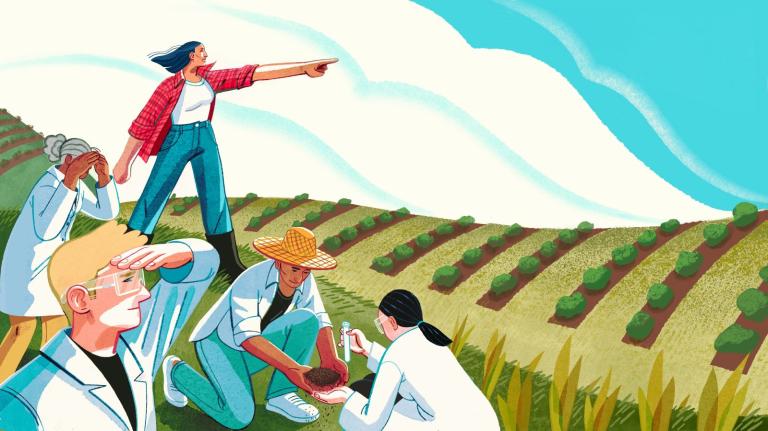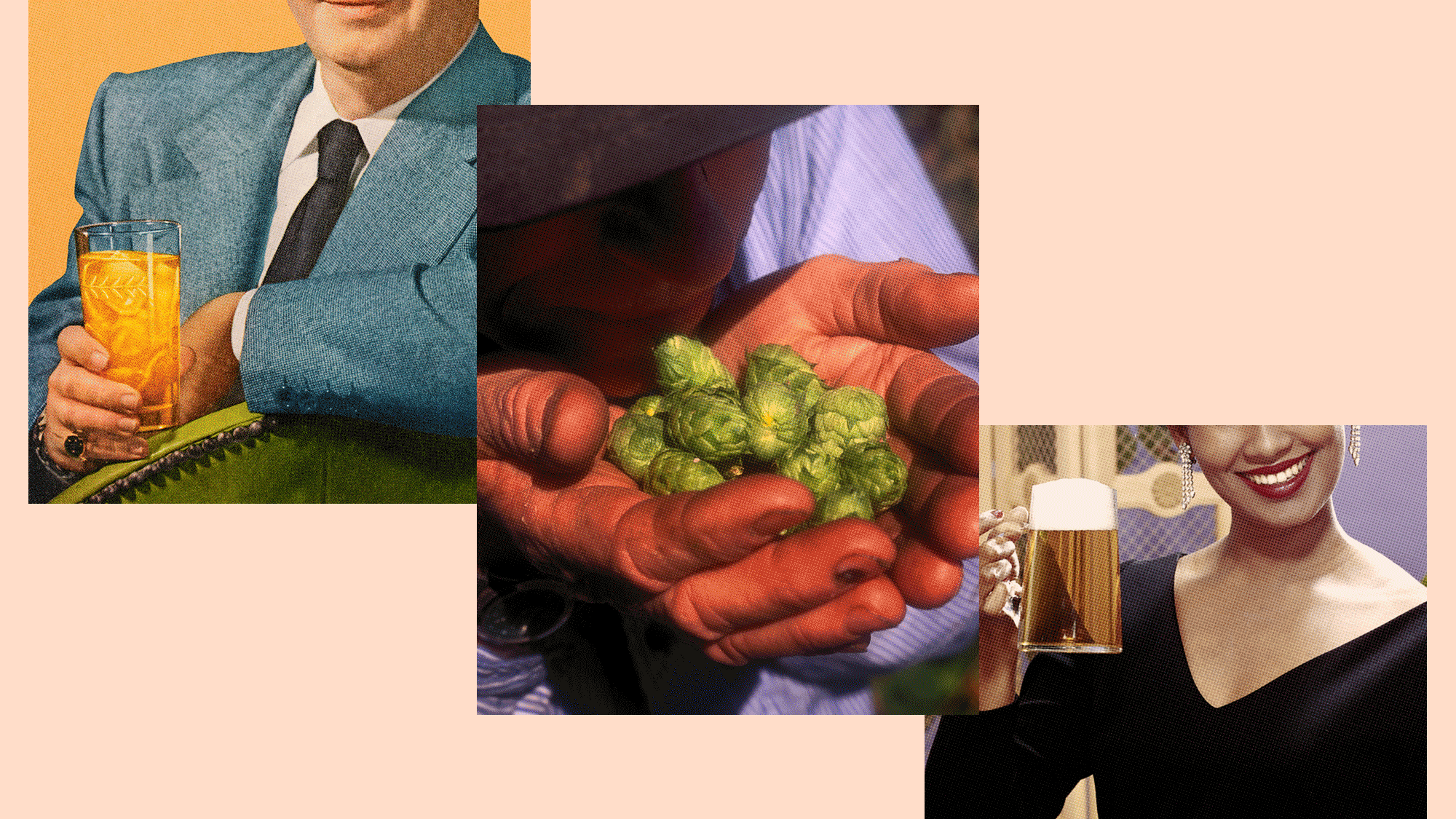Americans have had a lot to drink about lately. From the pandemic and the election to the ongoing battle for racial justice, and, at long last, the onset of #vaccinatedgirlsummer, it’s no wonder people are imbibing more alcohol. Sometimes a lot more.
So what does that mean for the planet?
Like any product, making booze requires resources and creates waste. Beer has four main ingredients: water, barley, hops, and yeast. Wine and distilled spirits often have just two or three. Of course, if you’ve ever had a funky craft brew you know that all sorts of other flavorings and twists can go into the mix (one of my all-time favorites featured blueberries, vanilla beans, and catnip). At its core, though, alcohol is a relatively simple concoction.
And we drink a lot of it. Worldwide, people consume around 117 billion gallons of alcohol every year, with the lion’s share — over 100 billion gallons — in the form of beer or hard cider. Today, the U.S. grows around 2 million acres of barley, and almost all of it is used for beer. Barley and hops aren’t particularly intensive crops, but it’s no secret that our industrialized agriculture system takes a toll on the land and the climate (and vice versa).
All the barley and adjunct grains that go into brewing those gallons wind up as a waste stream. Once the fermentation process is complete, brewers are left with a porridge of malted barley and hops to dispose of or repurpose as best they’re able. About a pound of that soggy mix gets left behind with every six pack of beer produced. Historically, a large portion of it went to animal feed, but the rising popularity of urban microbreweries and home brewing has put beer makers farther away from the farmers they might have partnered with. In some cases, the only option is to dump it.
But before these sobering realities get you down, know that a sustainable future doesn’t have to be dry. A growing number of entrepreneurs and researchers are finding innovative ways of making your favorite beverages more climate-friendly. They’re creating new uses for the byproducts of brewing, making tasty new drinks from upcycled ingredients, and embracing regenerative agriculture and grains that are easier on the earth. There’s never been a more exciting time to drink responsibly.
Get your snack on
When Dan Kurzrock was a freshman at UCLA in the late 2000s, he took up brewing. But he was dismayed by the amount of grain he was throwing away. For every 5-gallon batch, he’d haul about a Gatorade-cooler’s worth (8 to 10 pounds) of grain porridge to the garbage. It didn’t help that his campus at the time didn’t offer good recycling options, let alone composting. “It felt like I was wasting food every time I made beer,” he says.
Kurzrock thought: Why not try to bake bread using that leftover grain and sell it to friends and fam to support his brewing operation? That was the original lightbulb moment behind ReGrained, his upcycled food company in Berkeley.
The company rescues “spent grain” (a term that Kurzrock rejects on principle) from commercial breweries and, through a patented process, mills it into a powder it calls SuperGrain+ that can be sold to food processors for a variety of applications. Kurzrock will be the first to tell you that brewers are not a wasteful bunch. ReGrained is one avenue for upcycling that byproduct, Kurzrock says, and putting it to the highest possible use: feeding humans.
A case in point: Beast Mode Brownie, a collaboration with cookie dough company Doughp that launched earlier this month. It offers six times the fiber and twice the protein of the average cookie dough, thanks to the inclusion of so-called spent grain. “This is really something that can supercharge a recipe,” Kurzrock says.
ReGrained is growing rapidly, and the plant in Berkeley currently takes in a few million pounds of wet grain a year — processing roughly a ton per hour. Some of that stuff is used to make its own line of snacks, called Puffs, with sophisticated flavors like aged sharp cheddar and smoked sea salt and pepper. But that isn’t the ultimate goal. “By building a brand,” Kurzrock says, “we’re helping to start the conversation and develop the awareness of this as a new and exciting next-generation food ingredient.”
Get out the whey
Beer, of course, isn’t the only product that generates waste. The byproduct of cheesemaking is one we’re likely all familiar with: whey. Every pound of melty goodness results in 9 pounds of excess whey. Packed with protein, whey has become a high-demand product in its own right, with a market worth billions, but dairy producers are still awash in it — a problem food scientist and entrepreneur (and recent Grist 50 honoree) Emily Darchuk witnessed firsthand. “They’re doing whatever they can to get rid of it,” she says, which may include mixing it into animal feed, spreading it on fields, or dumping it down the drain.
Darchuk saw an opportunity. She founded Wheyward Spirit to make a smooth, clear spirit out of, you guessed it, whey. It isn’t the first to ferment whey — you can choose from at least 10 whey vodkas and a handful of gins. What sets Wheyward apart is that it’s neither of those things. In fact, it’s a unique concoction, and the first specialty spirit to be made with whey. The distillation process is more akin to tequila than vodka, Darchuk says, designed to create a signature flavor she describes as “subtle hints of oaky vanilla, a little bit of warm spice, and fruit or Champagne notes.”
The first batch hit the market in September with direct orders through the company’s website. It’s just now starting to pop up at select stores and restaurants, though Darchuk says it has built up a “herd” of customers across the country.
ReGrained and Wheyward Spirit are part of a growing landscape of innovation in upcycled food. Darchuk says the aim is to change how the world produces food and booze, and how it handles various “waste” streams. Kurzrock cofounded the Upcycled Food Association, which has around 160 member companies on a similar mission. With a greater and greater appetite for products that are sustainable, ethical, and innovative, Kurzrock says that upcycled foods are finally “having their moment.”
As a pioneer in the sustainable booze space, Darchuk is also encouraging retailers to reconsider the layout of the liquor store. While eco-friendly claims have become commonplace on almost every grocery store aisle, the same is not true at liquor stores. “Why do people care about something they spend two or three dollars on,” Darchuk wondered, “but not about something they’re spending $30, $40, or $50 on?”
The answer: They might, if they knew they had the option. Just as supermarkets have expanded and demarcated “natural” or organic offerings, Darchuk sees the same happening with liquor as both supply and demand grow for more sustainable products.
Get to the root
Patagonia Provisions launched its first beer, Long Root Pale Ale, in 2016. It was the first beer made with an adjunct grain called Kernza. Developed by The Land Institute, an agricultural research organization in Kansas, Kernza comes from intermediate wheatgrass, which was brought to the U.S. about 100 years ago. In terms of its uses, Kernza is fairly similar to the conventional wheat that we know — but it’s a perennial, meaning it lives and remains in the soil for years rather than being dug up and replanted annually.
The “long root” in the beer’s name references Kernza’s deep, robust root system — which is typical for a perennial crop, says Tessa Peters, director of crop stewardship at The Land Institute. Because perennials keep growing for years, Peters says, “those long roots establish and are in the soil, alive, during the entire season.” This is great for a lot of reasons: The roots, which are continually growing, dying, and growing some more, boost organic matter in the ground. They hold soil in place, preventing erosion and the release of carbon that happens when a field is tilled. And as those roots burrow ever farther into the earth, they reach groundwater and excess nitrogen that may be running off from other nearby fields.
“Annual crops don’t function like an ecosystem,” says Land Institute president Rachel Stroer. “They don’t steward the ecosystem in which they’re grown. We try to mimic the ecosystem with all kinds of subsidies. But perennial grasses are deeply rooted — and that’s exactly the characteristic that we’re trying to bring to the agriculture system.”
Although it’s being used as an adjunct in beer, research is underway on how to malt Kernza — a step in the brewing process where the primary grain is soaked in water and allowed to germinate, preparing it for fermentation. Beers and spirits made primarily from Kernza should be under development within a couple of months, Peters says. (Last fall, California distiller Ventura Spirits offered a limited edition Kernza whiskey, which quickly sold out.)
The crop has many applications beyond booze. It can be used in bread, pasta, or eaten as a whole grain. In addition to its land and soil benefits, Kernza packs a greater protein and antioxidant punch than conventional wheat. All those qualities make Kernza and other perennials our best shot at not just a more sustainable pint, but greater food security for the long haul. “With the kind of population we want to sustain, I don’t think we can do it for very long without perennial grains,” Stroer says.
So go get your summer drink on with a Long Root Pale Ale, or a Keep the North Cold golden ale. “But then come back,” Stroer says, “and we’ll give you the next course.”



